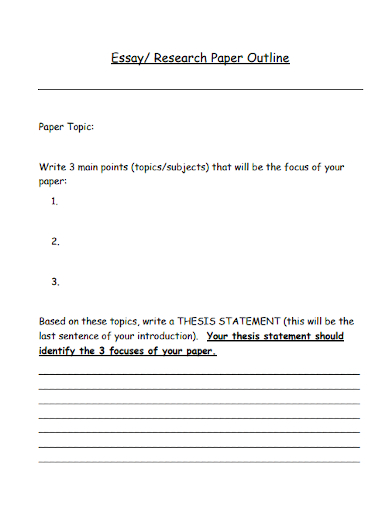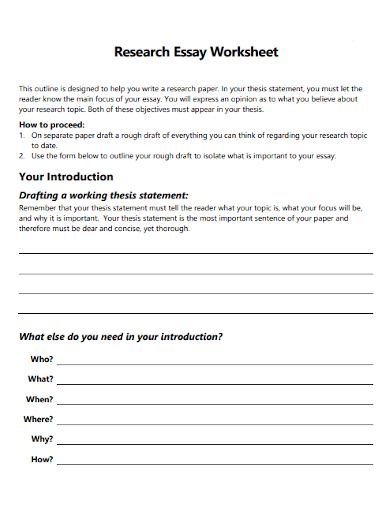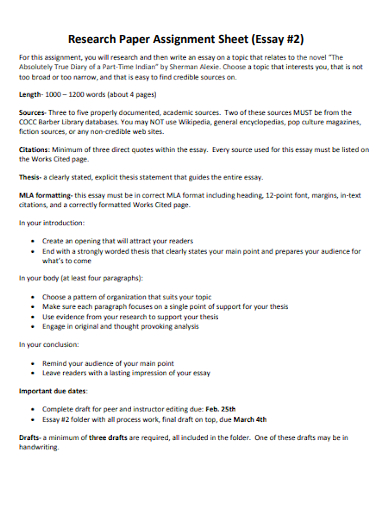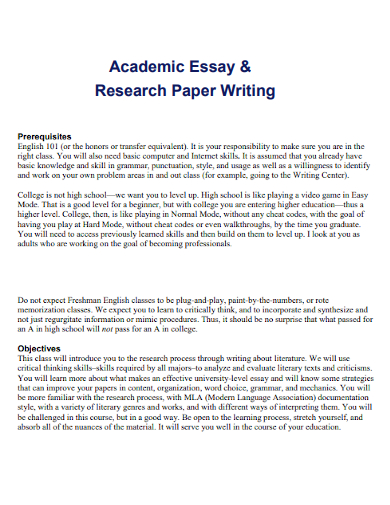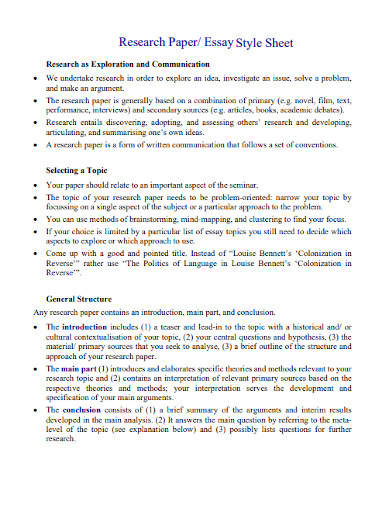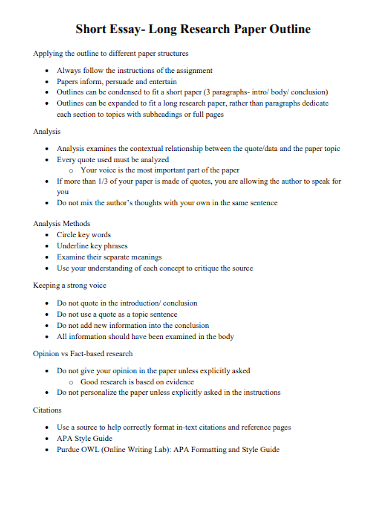A research paper is a piece of academic writing that includes analysis, interpretation, and an argument based on independent study. Research papers are comparable to academic essays, but they are usually longer and more extensive assignments that are used to evaluate not just your writing abilities but also your scholarly research abilities. A research paper demands you to show that you have a thorough understanding of your subject, engage with a number of sources, and contribute something new to the discussion.
10+ Research Paper Essay Samples
Making research paper outlines before starting school, scholarship, or contest essays can make the writing process go much more smoothly. Research paper outlines, regardless of length or complexity, assist you in organizing your thoughts. Investing time in developing this talent will pay off in the long run, both in school and in some vocations. This post will go through how to write a good research paper outline that will help you write winning essays every time.
1. Research Paper Essay Format Template

2. Proposal Essay For Research Paper
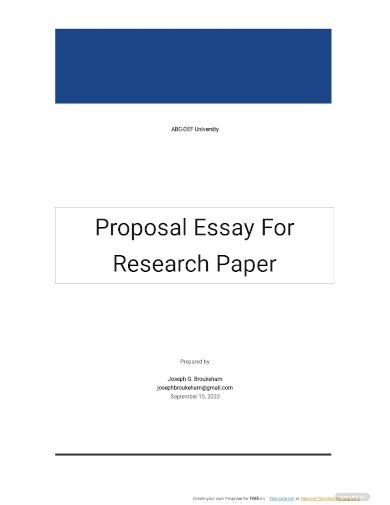
3. Research Paper For College Essay
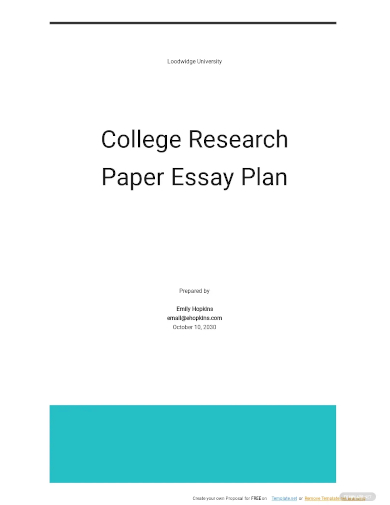
4. Research Paper and Essay Exam Topics
5. Argumentative Research Paper Essay
6. Research Paper Outline Essay
7. Research Paper Essay Worksheet
8. Research Paper Assignment Sheet Essay
9. Academic Essay & Research Paper Writing
10. Research Paper & Essay Style Sheet
11. Short Essay & Long Research Paper Outline
Outline
Decide what kind of research paper you’ll be writing after you’ve chosen a topic. Descriptive, argumentative, and comparative essays are all common styles. Thankfully, all three have extremely similar architecture. A list of stages to help you create an outline is provided below.
- Make a decision about the type of essay you’ll write. High school and early college research essays are usually five paragraphs long and are either descriptive or persuasive.
- Choose a topic for your essay. Instructors frequently assign themes to students. The ideal themes are those that are both interesting and debatable to your reader.
- Compile a list of notes, resources, and references.
- Complete any research or investigations that are required.
- Use complete sentence or alpha-numeric formatting to organize your outline. In comparison to full sentence outlines, alphanumeric outlines contain less depth. Both are demonstrated in the following instances.
- Use parallel structure whenever possible. Each component of the outline should start with the same word type—for example, nouns or verbs. Make sure you utilize the same tense when utilizing verbs.
- Even if your paper is longer, think in terms of the five-paragraph essay. An introduction, body paragraphs that address the thesis directly, and a conclusion are all necessary elements.
- Make your first sentence as strong as possible. This is, second only to the thesis, one of the most significant sentences in your paper. While introducing your topic, this statement should pique your curiosity.
- For at least three supporting sentences, quotations, or citations, add the ideas—or full sentences—for at least three supporting sentences, quotations, or citations.
- Make a counter-argument to your point. This is the last sentence in the introduction and usually contains three points.
- To support each point in the thesis, write a paragraph. Start each paragraph with a topic phrase that addresses each argument in the thesis in order.
- Restate the thesis of the paper in the conclusion paragraph.
- At least two lines that summarize your essay should have ideas—or whole sentences.
- Finish with a declarative statement or some recommendations for future research.
- Consider writing a compare and contrast essay. A compare and contrast essay has a somewhat different format.
- An introduction, a paragraph describing the similarities, a paragraph describing the differences, and a conclusion are typical elements of such works.
- For larger writings, advanced organizers may be useful. Each point of the thesis might be elaborated over several paragraphs, which could be introduced using an advanced organizer, headers, and subheadings.
FAQs
How to use quotations?
When the author’s words are particularly well chosen or memorable, use quotations. Copy the exact words, put them in quotation marks, and cite the author or speaker’s name when you quote even a short sentence.
How to choose a research paper topic?
There are various ways to come up with a research paper topic, from brainstorming with a pen and paper to discussing it with a classmate or lecturer. You can try free writing, which entails deciding on a wide topic and writing constantly for two or three minutes to find anything pertinent that might be fascinating. Other studies can also serve as a source of inspiration. Ideas for other specific areas that warrant further investigation are frequently included in the discussion or suggestions sections of research publications.
If you want to see more samples and formats, check out some research paper essay samples and templates provided in the article for your reference.
Related Posts
FREE 10+ Lined Paper PDF Samples
FREE 8+ Printable Lined Papers
FREE 7+ Evaluation Essay Samples
FREE 6+ Sample Research Papers
FREE 6+ Sample Mla Cover Page Templates
FREE 5+ Paper Outline Samples
FREE How to Write an Academic Style
FREE 13+ Technical Writing Samples and Templates
FREE 15+ Sample Outline Templates
FREE 11+ Professional Writing Samples
FREE 10+ Monograph Samples
FREE 10+ Sample Thesis Statement Templates
FREE 8+ Persuasive Essay Samples
FREE 7+ Analysis Essay Examples
FREE 7+ Sample Cover Page for Research Paper Templates



